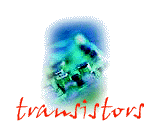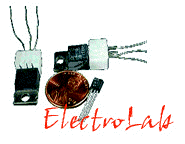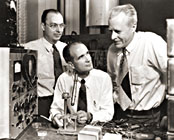






![]()
METAL OXIDE SEMICONDUCTOR FIELD
EFFECT TRANSISTOR: DEVELOPMENT
click here to learn more about the scientific aspects of this
transistor
W hile learning about the development of MOSFET, it would be interesting to consider the development of the Field Effect transistors in general.
Field effect transistors, though they were originally dismissed as a working transistor type, were revived in 1960 and they are now used by the million inside all kinds of modern electronic devices.
 It all started with an idea from William
Shockley in 1945. After he and Bardeen had developed the junction transistor
and the point contact transistor, Shockley had an idea for making a solid state device out
of semiconductors. He figured that if you create a strong electrical field nearby a
semiconductor, it could cause a current to flow in the circuit. He, and later Brattain,
both tried to build one, both being failed attempts.
It all started with an idea from William
Shockley in 1945. After he and Bardeen had developed the junction transistor
and the point contact transistor, Shockley had an idea for making a solid state device out
of semiconductors. He figured that if you create a strong electrical field nearby a
semiconductor, it could cause a current to flow in the circuit. He, and later Brattain,
both tried to build one, both being failed attempts.
It was after this, three years later, to be exact, that Brattain and Bardeen built the first working transistor, the germanium point contact transistor. It was manufactured and labelled as the "A" series. To add to this sudden flurry of inventions, Shockley then invented the junction (sandwich) transistor, which was manufactured for quite a number of years afterwards. But it was in 1960 that a Bell Labs scientist, John Atalla, developed a new design based on Shockley's first field-effect theories. By the end of the year, most manufacturers moved from developing the junction type integrated circuits to field-effect devices.
The MOSFETs (Metal Oxide Semiconductor Field Effect Transistors)are the latest and the most important Field Effect Transistors. This type was developed by Bell Labs, Fairchild Semiconductor, and countless Silicon Valley and Japanese electronics companies.
Today, this is the most commonly used transistor, especially in the complex electronic devices we encounter today. This transistor is used for stereo amplification as well as in speakers and microphones. Another very common and essential use is to boost telephone signals as they travel around the world.